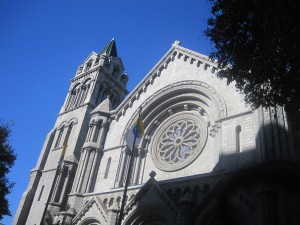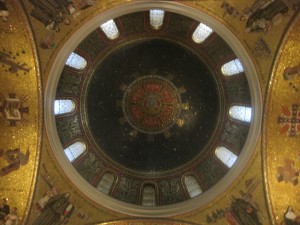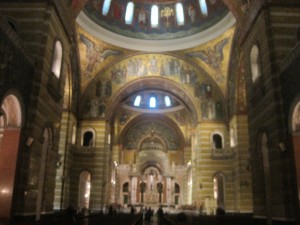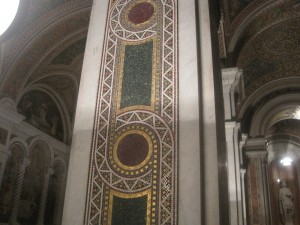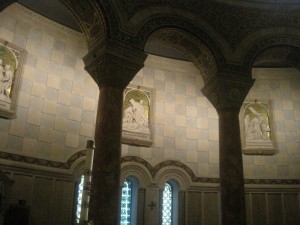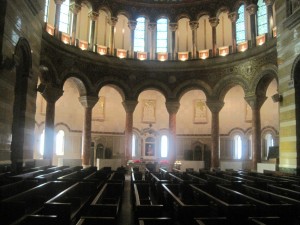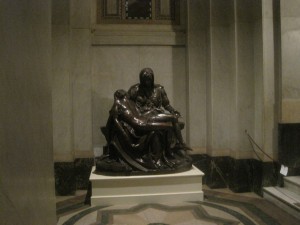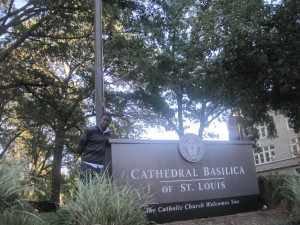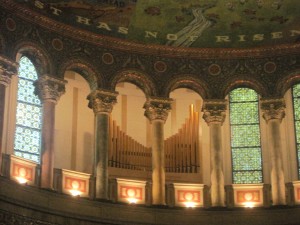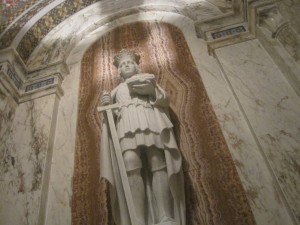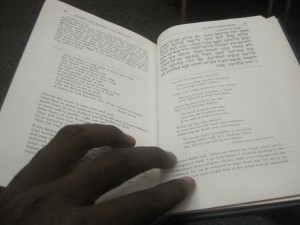 On Friday, I found myself in a Synagogue, wearing a yarmulke, holding a siddur, browsing a Talmud, and reading the Torah in original Hebrew. This doesn’t happen to me every day. It has in fact never happened before. A few minutes earlier, I had just concluded a tour of the city’s biggest Cathedral, and hours earlier had driven the current Fulbright scholar, teacher of Arabic to a mosque for his Friday prayers. All I knew about the Jewish faith was from the few books I’d read, the few movies I’d seen, and the few conversations I’ve had with people who should know and those who shouldn’t, and the Bible.
On Friday, I found myself in a Synagogue, wearing a yarmulke, holding a siddur, browsing a Talmud, and reading the Torah in original Hebrew. This doesn’t happen to me every day. It has in fact never happened before. A few minutes earlier, I had just concluded a tour of the city’s biggest Cathedral, and hours earlier had driven the current Fulbright scholar, teacher of Arabic to a mosque for his Friday prayers. All I knew about the Jewish faith was from the few books I’d read, the few movies I’d seen, and the few conversations I’ve had with people who should know and those who shouldn’t, and the Bible.
The bible tells more, of course, and then less. The bible has Jesus, the apostles, the miracles, the disciples and the revelation. But, as I’ve learnt, one can’t be a good practitioner of Judaism by just reading the Bible. It just doesn’t say as much as necessary. That’s where the Talmud comes in. It’s the Torah explained, and this comes in handy especially since people of the Jewish faith don’t believe in Jesus, his divinity or his impending return. He’s just one guy that passed through the world like any other person. The Torah is just another word for the five books of Moses, “the entirety of Judaism’s founding legal and ethicalreligious texts.” And oh, the Torah is not a book. It’s a scroll, a large one, and everything on it is hand-written, in Hebrew (and I think in Aramaic as well). Whoever wrote this one I saw has a very good and regulated handwriting.
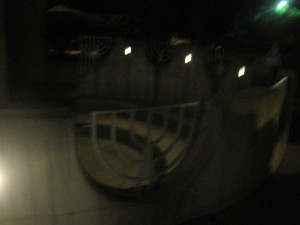 It was equally fortuitous that the synagogue visited was not an orthodox one, because, as I found out, the beautiful singing and instrumentation that got me most impressed by the Shabbat service is not a common part of Jewish Shabbats. It’s found only in liberal synagogues. What’s more, it had a woman lead. I didn’t verify if she was the woman rabbi or just the choir/singing leader. All I remember was being transported into realms of believing as she sang, and strummed the guitar to accompaniment of another guitar and a fiddle. The whole service itself was half singing and half reciting, much like a Catholic mass (minus the singing and instrumentation).
It was equally fortuitous that the synagogue visited was not an orthodox one, because, as I found out, the beautiful singing and instrumentation that got me most impressed by the Shabbat service is not a common part of Jewish Shabbats. It’s found only in liberal synagogues. What’s more, it had a woman lead. I didn’t verify if she was the woman rabbi or just the choir/singing leader. All I remember was being transported into realms of believing as she sang, and strummed the guitar to accompaniment of another guitar and a fiddle. The whole service itself was half singing and half reciting, much like a Catholic mass (minus the singing and instrumentation).
The Shabbat (sabbath) starts at Friday evenings and ends about 25 hours later. During this period – commanded by God to be kept holy by all believers – Jews are not expected to use fire, go to work or use electricity. It is for this reason that the only picture I took while in the service was of the siddur, and was my last while in the premises, in respect of the preference of the worshipers. While we were in the Synagogue library, I had to put on the light, and put it off later too. Those laws are strictly respected. If I would ever return to another one of those Shabbat services, it would most likely be because of the music, and the whole attitude of homeliness that one feels while there, even though – amidst a room full of people of a different race and skin colour, it is not hard to be spotted as a wandering stranger. What made up for that were the smiles and warmth of the people who all wanted to know about us and where we came from.
It was surely a fun time, definitely enlightening, as the five other students I went with confirmed. “Shabbat Shalom,” we said.
